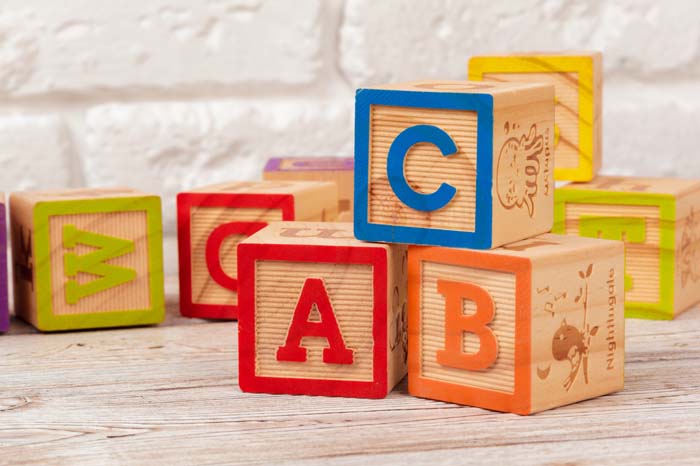Language is used to communicate our needs, desires, thoughts, and so on. Our language skills largely depend on our vocabulary. The greater our vocabulary, the better we can communicate. This same principle applies to children as well. The more words they know, the better they can express themselves.
Children learn and pick up many words daily, the more language they are exposed to, the more words they absorb, understand, internalize, and finally use. The expanding vocabulary of your child can be seen once they begin using words to express themselves. With trial and error, they will soon get it right.
Try these 7 Simple Tips to Help Enhance Your Child’s Vocabulary
1. Have Regular Conversations
Parents and family are the child’s first teachers. Regularly taking and interacting with the young child exposes them to words and language. Even babies begin to recognize words like their name, Mama, and dada and either turn to you when you call them or turn toward the person you are referring to. This happens with practice and repeated exposure to the same phrases repeatedly, so it’s never too early to start conversing with your little one. Talking to your baby and toddler helps them understand and process words better, which helps the child’s vocabulary development.
2. Use Vibrant Words
Or Descriptive words. Once your toddler starts talking and using full sentences, help them make their language more vibrant by introducing them to descriptive vocabulary. So instead of saying bring me an apple, you can say, bring me a red apple, or let’s have some lunch, you can say let’s have some delicious parathas for lunch with crunchy carrots. You can even build on what your child says, e.g., if they say, “I want to wear a dress today,” you can ask, “would you like the yellow one or the one with butterflies on it.”
3. Read, Read, and Read Some More
Reading is one of the most effective ways to improve your child’s vocabulary. Reading books exposes your kid to words not usually heard in everyday language. Reading books exposes your child to a plethora of new words, phrases, and sentence structures. The more you read the same book, the more familiar your child becomes with its words. Soon you can talk to your child about the story or what is happening on the page, and ask them questions like “where is the bunny?” or “how many flowers can you see?” or “what is this?” and “ what is it doing?”. This will get your child thinking, and they will find the right word or sentence to answer you. Remember to be patient with them as they think. You could give them some clues after a few seconds have passed.
4. Use Labels
You can begin by labeling the obvious things like the TV, refrigerator, door, table, and chairs and then on to other things like windows, clocks, mirrors, cupboards, and so on. Use a blank paper, write in clear block letters, and tape it in the right place. You can keep increasing the number of words as and when your child learns the old ones. You can even use the preschool vocabulary words that they learn in school.
5. Keep Asking Questions
Asking your child questions gives them a chance to think, find suitable words, and then answer you. This activity helps the child to recall words they have already learned. Please keep your questions simple and be patient when they take the time to answer. You can ask them what they’d like for a snack, what they would like to do in the evening, or even the taste of the banana or orange they are eating.
6. Word Games are Fun
There are many word games that you can play in the car while waiting for the bus or even on a rainy day. You can play with what rhymes with- ‘mat,’ ‘rug,’ ‘pup,’ a color that rhymes with ‘mellow,’ a color that rhymes with ‘bed’ you can make sounds and ask them to guess the animal or bird, you can play eye spy, like, “I spy with my little eye a long yellow fruit,” or “I spy with my little eye something that you can kick,” you can even play this game when ready a book. “I spy something swimming in the water,” or “I spy something flying near the flowers,” the possibilities are endless.
7. Picture Talk
Look for a colorful picture in a magazine, or draw a simple one yourself. You can sit with your child, have a marker and some stickers, and ask your child questions about the picture. E.g., where is the cat? Where is it sleeping? Circle the girl wearing a dress. What color is the dress? Put dots on the tree (focus on the word ‘on’). How many birds are there? Is it a sunny day or a rainy day? Let’s draw some raindrops in the picture, and so on. In this activity, you are trying to get their attention to a particular area of the picture and then asking them a question about it. Keep your instructions simple, and watch them follow and answer your questions.
Expanding your child’s vocabulary doesn’t mean just telling them new words and asking them to repeat them. They need opportunities to practice what they have learned as well. Children learn new words daily with the different concepts taught by preschools like EuroKids. The teachers give them ample ways to show and tell you what they have learned.
Visit EuroKids for more engaging blogs.














